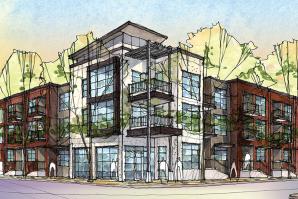If Gov. Jerry Brown had his way, the redevelopment agencies throughout California would be history. Not only would he demolish all of the nearly 400 active agencies, Brown would also use the billions they earn in property taxes to plug the state’s massive deficit and support schools and public safety services.
He’s had these agencies in his crosshairs from Day 1, picking up where Gov. Arnold Schwarzenegger left off and targeting redevelopment funds set aside for cities to rebuild blighted areas. This past June, Brown went for the kill with two bills (Assembly Bill X1 26 and ABX1 27) that basically gave redevelopment agencies two options: Pay up or perish.
Under the legislation, a redevelopment agency would have to pay the state a portion of $1.7 billion — a first-year lump sum and annual cotinuation payments — to avoid annihilation. But these continuation fees, or “ransom” payments, are not cheap, forcing some agencies to reduce revitalization efforts if they want to survive.
Backed against the wall, the California Redevelopment Association (CRA), the League of California Cities and others fired back with a petition, claiming the statutes are unconstitutional and violate Proposition 22, which presumably protects local tax coffers from being raided by state lawmakers. The fate of redevelopment now resides with the state Supreme Court, which issued a temporary stay on the ransom payments and is expected to render a final decision by January.
Rather than risk dissolution, several redevelopment agencies in the Capital Region are choosing to pay the continuation fee. But currently, only projects approved before Brown signed the budget can proceed, meaning near-term projects as well as the long-term future of redevelopment agencies are stuck in limbo.
“We worked our butts off in this state,” says Mike Ammann, president of the San Joaquin Partnership. “We knew that most governors come in and throw the baby with the bath water right out. Brown’s working on cuts but not investments for new dollars that generate wages and taxes. All he has done is induce uncertainty.”
But should redevelopment be a priority when the state’s $26 billion budget gap has led to significant reductions in education and public safety? That’s the question posed by H.D. Palmer, spokesman for the California Department of Finance.
“The fact is, the government has to close the budget gap,” he says. “By definition, budget reductions are going to be part of that mix.”
To challenge those who claim the governor is not focused on jobs, Palmer points out Brown’s efforts to bring tax relief to job creators, tax exemptions for manufacturing equipment and the bill he signed in September to expedite big-ticket construction projects like stadiums and arenas.
Brown declared war on the state’s redevelopment agencies in
January. But these agencies have been under fire since before the
recession. They were set up more than 50 years ago to help cities
revive areas of urban decay with a simple model: A city would
declare a certain area to be blighted and then sell bonds that
would be repaid with revenues from increasing property values.
Without these agencies, supporters say, infill and historic
development wouldn’t be possible and cities would miss
opportunities to create jobs, bolster affordable housing and
build infrastructure. But opponents argue redevelopment
rips money from city budgets and that city leaders abuse the
model by calling empty land “blighted” so they can collect any
future property tax increases.
A 2010 investigation by the Los Angeles Times revealed that “more than 120 cities, for example, spent more than $700 million of their affordable housing funds between 2000 and 2008 without building a single new unit, according to state data.” These figures support arguments made by critics such as the Central Solano Citizen Taxpayer Group, which denounces redevelopment agencies as a corrupt vehicle for political shenanigans and “road-to-nowhere” projects.
“Government should be providing minimal services such as roads, basic infrastructure,” says George Guynn Jr., the group’s president. “The government does not need to be in the loan business, especially with taxpayer money.”
Redevelopment agencies nonetheless refuse to go down without a fight, no matter what the cost. Throughout the Capital Region, cities are forking over what the state says they owe to stay afloat.
Fairfield’s redevelopment agency, for example, has been in business since the mid-1970s, and success stories include Westfield Solano mall and the Green Valley corporate area. But in September, city council members chose to pay the continuation fee of $11 million this year and $2.6 million annually in years to come. The city couldn’t afford not to pay. If it opted out, Fairfield would have forfeited the $54.8 million that the agency owes the city in loan repayments through 2019, which would’ve left a gaping hole in the general fund, according to Sean Quinn, Fairfield’s city manager.
“The decision was a complicated one,” he says. “We wanted to protect that debt to make sure the debt got paid off.”
The same numbers game played out in Roseville. According to the city, making an initial $1.85 million payment and $400,000 annual payments thereafter is a better deal than not paying and potentially losing $7.7 million worth of land assets to an outside agency, says Kevin Payne, Roseville’s redevelopment manager.
For proof of the benefits of redevelopment funds, he says, look no further than Roseville’s Historic District Streetscape/Infrastructure Improvement Project. The agency kicked in $3 million for the $13 million project, which was completed in 2009 and has attracted 11 new businesses and 66 new permanent jobs in what was once Roseville’s most blighted area. In addition to revitalization, the agency has directed funds to projects that improve public safety, housing and schools, including about $500,000 in pass-through funds to local districts in the past year. The continuation fee would keep the agency alive, Payne says, but projects in the pipeline would be put on hold.
In August, the city and county of Sacramento agreed to pay $22 million to keep redevelopment running another year. This allows the Sacramento Housing and Redevelopment Agency (SHRA) to continue with current projects, including renovations on K Street. Proponents say redevelopment funds have been critical for various Sacramento projects such as the Boys and Girls Club in Alkali Flat and the Citizen Hotel and IMAX Theatre in the urban core.
“Downtown redevelopment would not look the same without redevelopment funds,” says Michael Ault, executive director of the Downtown Sacramento Partnership. “Redevelopment was never meant to be the answer for us downtown, but we have always envisioned it being a tool to seed projects to allow others to capitalize on the momentum.”
This ripple effect has the potential to spur local economies, but redevelopment agencies should be more geographically strategic with their efforts and also develop better criteria for what qualifies for funding, says Ken Turton of Turton Commercial Real Estate. Overall, the redevelopment system, he says, doesn’t need to be abolished as much as remodeled. Without these funds, historical preservation would disappear.
“As long as you’re going to have historical preservation coupled with current occupancy regulations, you’ve got to have redevelopment funds to make projects economically viable,” Turton says. “Or else we’re all going to be sitting here looking at old dead buildings for a long time.”
Recommended For You

The Plight of CADA
Where goes the neighborhood?
Three years ago, Gov. Jerry Brown pulled the plug on local government redevelopment agencies and the estimated $5 billion a year they spend rebuilding inner cities to combat urban blight.

Mind the Gap
Finding new ways to fund affordable housing
Sacramento County will need an estimated 23,000 low- and very low-income housing units in the next nine years. The six-county region stretching from Yuba to Placer to El Dorado would need more than 41,000 units. But without the tax increment financing once provided by redevelopment agencies, city leaders are wondering where they’re going to come up with the cash to build.



